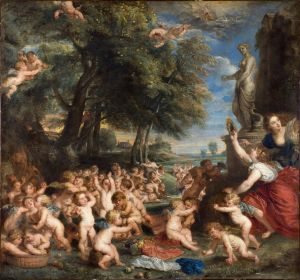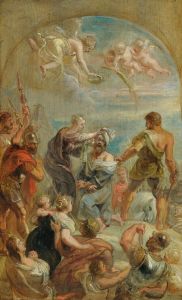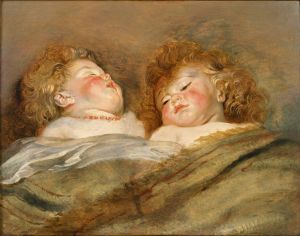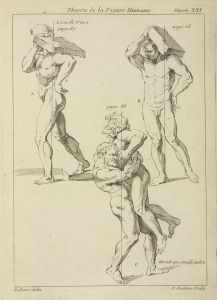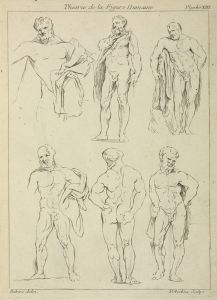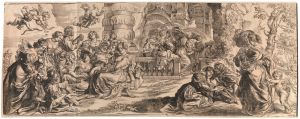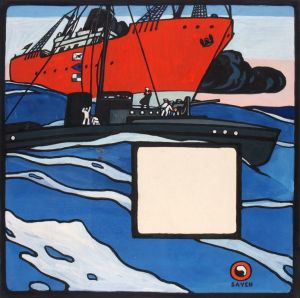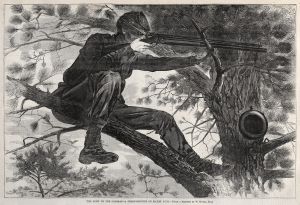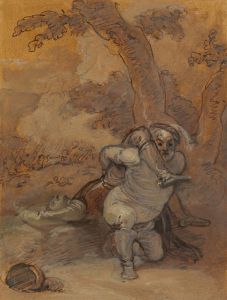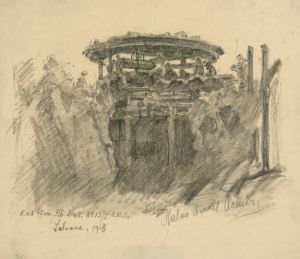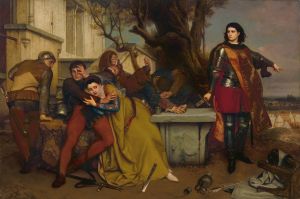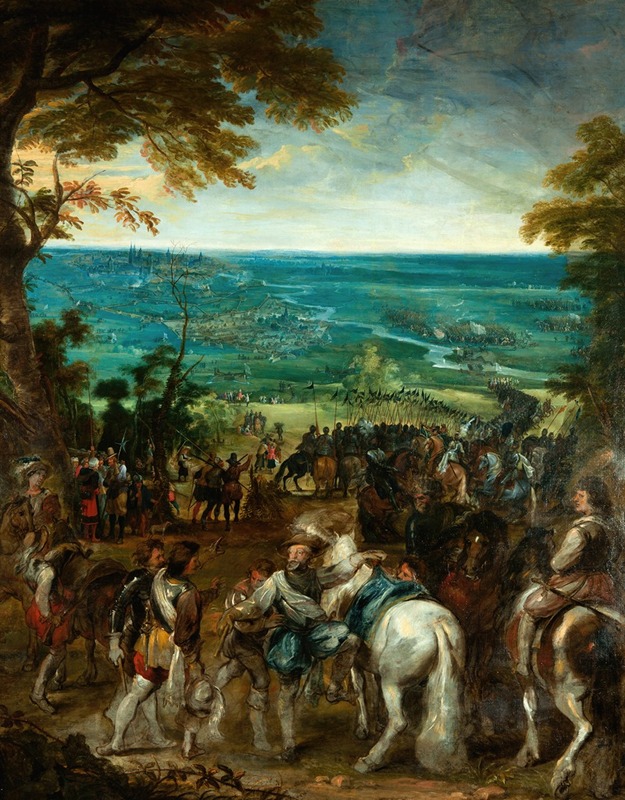
Henry IV of France at the Siege of Amiens in 1597
A hand-painted replica of Peter Paul Rubens’s masterpiece Henry IV of France at the Siege of Amiens in 1597, meticulously crafted by professional artists to capture the true essence of the original. Each piece is created with museum-quality canvas and rare mineral pigments, carefully painted by experienced artists with delicate brushstrokes and rich, layered colors to perfectly recreate the texture of the original artwork. Unlike machine-printed reproductions, this hand-painted version brings the painting to life, infused with the artist’s emotions and skill in every stroke. Whether for personal collection or home decoration, it instantly elevates the artistic atmosphere of any space.
"Henry IV of France at the Siege of Amiens in 1597" is a painting by the renowned Flemish artist Peter Paul Rubens. This artwork captures a significant historical event during the reign of Henry IV of France, specifically the Siege of Amiens, which took place in 1597. The siege was a pivotal moment in the final stages of the French Wars of Religion, a series of conflicts that had plagued France for decades.
Peter Paul Rubens, born in 1577, was a prominent Baroque painter known for his vibrant compositions, dynamic figures, and dramatic use of color and light. Although Rubens is primarily associated with the Southern Netherlands, his work was influential across Europe, and he often depicted historical and religious themes with great attention to detail and emotion.
The Siege of Amiens was a military engagement between the forces of Henry IV and the Spanish troops who had captured the city of Amiens earlier in the year. The siege was part of the larger conflict between France and Spain, which was intertwined with the internal religious strife in France. Henry IV, originally a Huguenot, had converted to Catholicism to ascend to the French throne, famously declaring, "Paris is well worth a mass." His reign marked the beginning of the Bourbon dynasty in France and was characterized by efforts to bring peace and stability to the country.
In 1597, the capture of Amiens by Spanish forces posed a significant threat to Henry IV's authority and the stability of his realm. The siege lasted from May to September, with Henry IV personally overseeing the operations to recapture the city. His leadership during this time was crucial in rallying his troops and maintaining morale. The successful recapture of Amiens was a turning point that helped consolidate Henry's power and paved the way for the eventual peace with Spain, formalized in the Treaty of Vervins in 1598.
Rubens' depiction of Henry IV at the Siege of Amiens would likely have emphasized the king's role as a strong and decisive leader. While specific details about the composition and elements of the painting are not extensively documented, Rubens' style often included dynamic figures and a sense of movement, capturing the intensity and drama of historical events. His ability to convey emotion and narrative through art made him one of the most sought-after painters of his time.
The painting serves as a historical document, reflecting the political and military challenges faced by Henry IV and his efforts to unify France. It also highlights Rubens' skill in portraying complex historical scenes with both artistic flair and historical accuracy. As with many of Rubens' works, this painting would have been intended to celebrate the achievements of its subject, in this case, Henry IV, and to immortalize a significant moment in French history.
Overall, "Henry IV of France at the Siege of Amiens in 1597" exemplifies Rubens' mastery of the Baroque style and his ability to capture the essence of historical events through his art. The painting remains a testament to the enduring legacy of both Henry IV as a monarch and Rubens as an artist.






